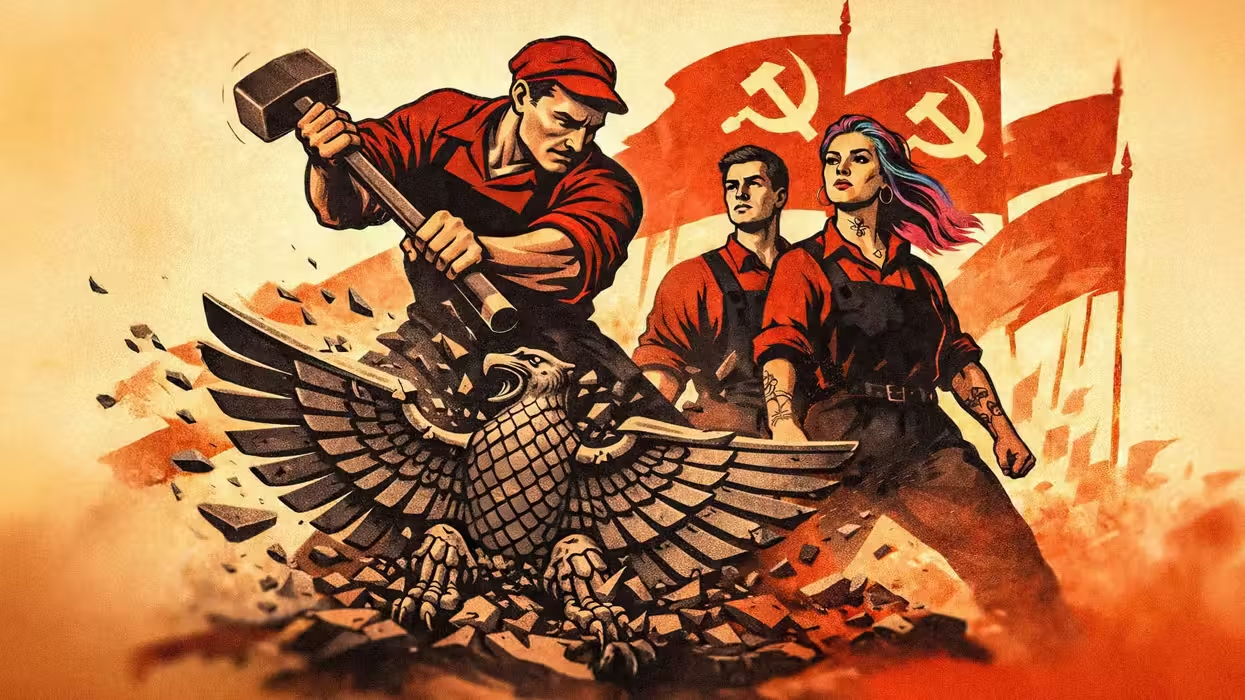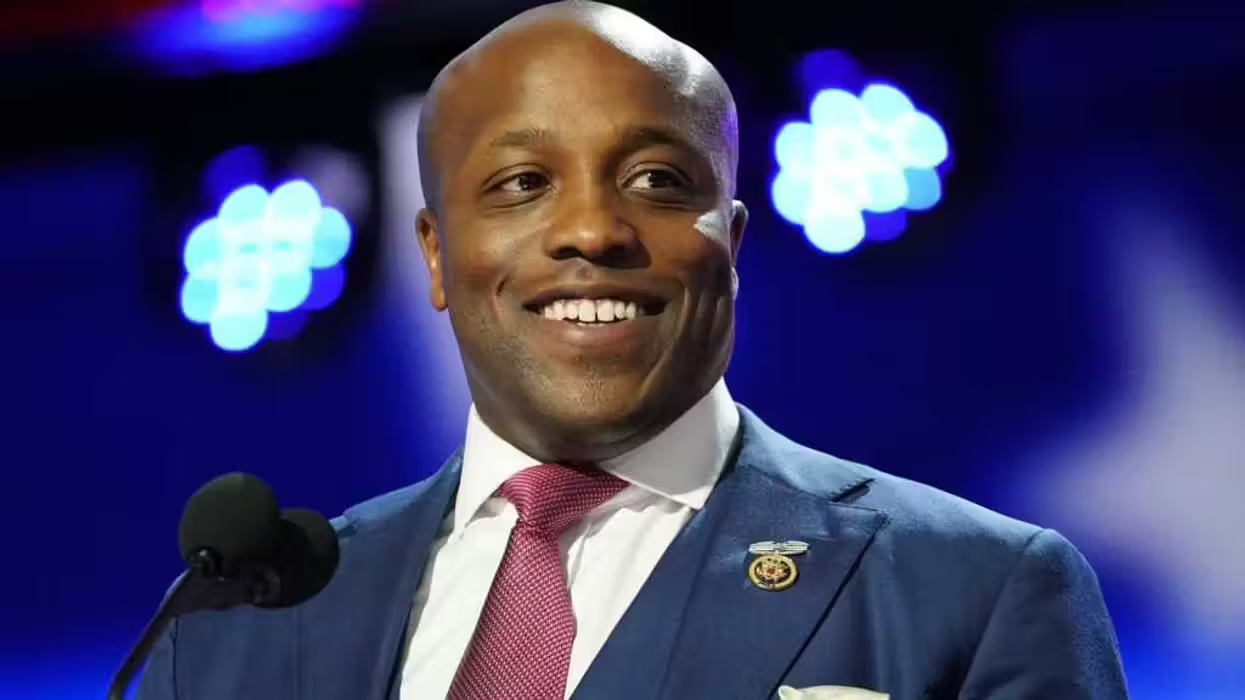
© 2025 Blaze Media LLC. All rights reserved.
In the early 1900s, one man with a vision took a risk to share with the world a way to save preemies. The tale of how his invention came to preserve the lives of millions of infants serves as a lesson for everyone.
More than a century ago, one man with a vision took a risk to save preemies.
If you listened to The Glenn Beck Radio Program today, you heard him read a truncated version of a feature story about Dr. Martin Couney from the November issue of TheBlaze Magazine.
Every issue of TheBlaze Magazine contains exclusive content not found anywhere else — online or in print. Normally, the magazine’s stories, research and special reports are reserved for subscribers to the print and/or digital edition, but on this Day of Hope, we’re making an exception with this piece.
Below is the full feature, “Boardwalk Babes: The Strange Story of the Incubator,” from the newest issue of TheBlaze Magazine, written by TheBlaze TV producer — and former preemie — Natasha Pascetta.
And click here to get our special Christmas gift offer for TheBlaze Magazine.

It was a cold day the last time I took the D train to Stillwell Avenue. It was the kind of cold that goes deep down the bone; that can cause a person to believe he’ll never be warm ever again. The scintilla of heat radiating from Nathan’s Hot Dogs was the only passing comfort as I walked to the boardwalk. Absent were the screams of children on the Cyclone roller coaster. Instead, I was overwhelmed by the deafening silence. Off-season, Coney Island is dead. As I looked up at the skeletal Parachute Jump, it was hard to imagine that, just months before, Coney was bustling with life.
And a century ago, not only was Coney buzzing with life, but it was abuzz about life. In fact, “life” was once a main attraction on the Coney Island boardwalk in the early 1900s.
“All the world loves a baby.”
The sign on the boardwalk was unmistakable. Painted in bold, vibrant letters no one could miss it.
Through the haze of hot dog vendors and sideshows, a handsome boardwalk barker by the name of Archibald Leach competed for the crowd’s attention, passionately crying, “Don’t pass the babies by!”
And they didn’t. From 1903 to 1943, millions of people visited the “Baby Incubator” exhibit at Coney Island.
And yes, it was exactly what it sounds like: a display of tiny premature babies in incubators—nestled right next to the bearded lady and sword swallower.
LIVES CHANGED BY A VISIONARY
The boardwalk barker, Archibald Leach, went on to achieve fame as Hollywood’s leading man under the stage name “Cary Grant,” and the babies went on to become healthy adults. They both got their start because of one extraordinary man’s vision.
****Get a special Christmas gift discount—and treat yourself to a gift—HERE****
The “Baby Incubator” exhibit was the brainchild of German immigrant Dr. Martin Couney.
Though quite the character, Couney was first and foremost a student of medicine. He studied under French Dr. Pierre Budin, who was the pioneer in incubator science in the late 1800s. Interestingly, Budin got the idea for a baby incubator from the poultry industry—the initial design of the water-heated chamber was based on the early technology used to hatch chickens.
The idea was radical for its time: Hospitals weren’t interested in Budin’s advancement yet, and medical experts were skeptical. So when the Berlin Exposition of 1896 opened, Budin sent his protégé, Couney, to sell the medical field and the public on his miraculous invention.
In honor of the incubator’s humble beginnings, Budin and Couney dubbed their first exhibit “Kinderbrutanstalt,” meaning “child hatchery.” Later, Couney would be fond of jokingly referring to these machines as “peanut roasters.”
Couney, who was as skilled a showman as he was a doctor, included actual living babies in Budin’s contraptions. With six premature babies feared to be dying on loan from a local hospital, Couney was able to save each one using Budin’s incubator technology. The crowds were amazed.
ACROSS THE POND
The show was a huge financial success. With the money he earned from the Berlin Exposition, Couney made his way to America.
Couney was making the exposition circuit with his incubator exhibit when he landed in western New York for the 1901 Pan-American Exposition.
While most everyone came to see Niagara Falls, it was Couney’s incubator babies that made a lasting impression on a young Arthur Brisbane, one of the greatest journalists of the 20th century. In an article for Cosmopolitan, he eloquently penned what he deemed the most important aspects of the Buffalo Exposition:
“Two features of the Exposition well worth seeing and thinking about are chosen for discussion here:
“Two vast extremes.
“The weakest and the most powerful manifestation of nature’s power.
“The falls of Niagara, with the great system of lakes and rivers behind them.
“The diminutive baby in its hot-air chamber, sightless, deaf, feeble—but with the great human race, the vast sea of organized thought, back of it.”
 Employees stand before the Infant Incubators building at the 1901 Pan-American Exposition in Buffalo, New York. (Library of Congress)
Employees stand before the Infant Incubators building at the 1901 Pan-American Exposition in Buffalo, New York. (Library of Congress)
The glory of Niagara Falls is easily observed. When compared to the great geological wonder, it’s amazing that something so commonplace, a baby, could catch and hold the imagination of Brisbane and the tourists. Brisbane thoughtfully explained why the tiny babies were even more majestic than the Honeymoon Capital of the World:
“But, if you will see it, there is more to interest in the little form behind the incubator glass than in all the roaring and power of ‘the Thunder of Waters.’
“The difference between the force of the Niagara River and that of the new-born baby is this:
“One, the river, represents material force, the mere force of gravity. The child’s brain represents spiritual force, the power of organization and speculation. The power sent here in fragile human forms to rule the falls, and other manifestations of crude power, regulate nature and do the work of embellishing and cultivating the globe.”
****Get a special Christmas gift discount—and treat yourself to a gift—HERE****
Couney saw the lasting value in humans’ innate fascination with life and decided to do what any good capitalist would do: make his life more comfortable by making others’ lives better. Couney realized he could make a living out of saving lives. After his success at Niagra Falls, Couney officially settled in the United States with plans to open a permanent incubator baby exhibit.
OFF TO THE BOARDWALK
The doctor brought the incubator over to America at a time when the medical field did not wholly accept the technology because “it was against maternal nature.” Banks would not finance the device because they simply thought no hospital would ever want the incubator. Couney needed to find money and support for his life-saving invention.
So he took the incubator to the very place where misfits were welcomed with open arms: Coney Island.
It was the perfect place to promote the positive effects of the incubator to the public and most importantly—save the lives of New York’s most helpless. Couney set up two “Baby Incubator” exhibits at Coney—one at Luna Park and the other at Dreamland.
Looking through a Coney Island guidebook from the 1930s, guests would find a description of the exhibit aptly filed under the category “Miscellaneous.”
It read: “Baby Incubators: Where premature infants first see the light of day. An educational journey through a miniature hospital. Boardwalk next to Steeplecase.”
One could argue that the exhibit offered much better care than even a regular hospital. Couney’s “incubator institution” was a pristine and elegant operation on the gaudy boardwalk. Local medical facilities would often advise parents to send their babies to Couney’s exhibit confident they would receive better treatment. Couney, highly defensive of his boardwalk institutions, confirmed, “Everything I do is strict ethical.”
Couney the skilled doctor and showman put his skills to work and had no trouble drawing a crowd.
Dr. William Silverman, who has done extensive research on Couney and the baby incubators, relayed a story about how Couney and his team would intentionally use tricks at their exhibits to make the babies appear even smaller.
 Dr. Martin Couney's efforts to spread the life-saving incubator technology led to exhibits around the world such as this one at the 1909 Alaska-Yukon-Pacific Exposition in Seattle. (University of Washington, via Flickr Commons and Wikimedia Commons)
Dr. Martin Couney's efforts to spread the life-saving incubator technology led to exhibits around the world such as this one at the 1909 Alaska-Yukon-Pacific Exposition in Seattle. (University of Washington, via Flickr Commons and Wikimedia Commons)
“The nurses were instructed to add more clothes as the babies grew larger to heighten the illusion of smallness of each of the infants on display,” Silverman wrote for Pediatrics, “and Madame Recht [a nurse trained by Dr. Budin who served as Couney’s assistant] wore an oversized diamond ring on her finger; she slipped this huge ‘sparkler’ over the babies’ wrists periodically to demonstrate how tiny the hands were.”
Even though the babies were already impossibly tiny, Couney understood the value of sensationalism. Literal lives were at stake, and Couney needed to bring in tourists any way he could.
Aside from being the first person to recognize the need and importance of the incubator, the doctor was also unprecedented in his tolerance and acceptance of all babies—and refused payment for their treatment.
In a piece for AmericanHeritage.com, Gary Brown explained Couney’s strict practices and ethics for treating any infants parents brought to his facilities:
“In their presence the baby received an identification necklace, which remained undisturbed until the infant was reclaimed. The doctor never accepted … any payment for treating an infant, and the identities of children and parents were kept in complete confidence. Couney accepted children from ‘every station of life, high or low, rich or poor, black or white,’ because ‘this institution for the preservation of infant life makes no distinction’—a remarkably progressive policy in a time when most places of amusement were segregated by law or custom.”
Couney trusted his incubator system so much that he put his own daughter, Hildegaarde, on display in the exhibit for three months when she was born prematurely.
In order to keep his operation running, he charged patrons 25 cents to ooh and aah at what he labeled “the world’s tiniest babies”—a practice he fiercely defended, stating: “All my life I have been making propaganda for the proper care of preemies, who in other times were allowed to die.”
ALWAYS SEEKING ATTENTION TO HELP INFANTS
The doctor was unrelenting in his quest to share the incubator technology with the world. In addition to the permanent Baby Incubator Institutions at Coney Island, he built an additional hospital on the Atlantic City boardwalk and continued to set up pop-up incubator exhibits at various expositions and fairs across the country.
****Get a special Christmas gift discount—and treat yourself to a gift—HERE****
Couney drew a considerable amount of fanfare at the Chicago’s Century of Progress Exposition in 1933. No one knows if this was intentional or not, but Couney set up the exhibit right next to the salacious burlesque dancer Sally Rand. It’s rumored that when police came to arrest Rand and her performers for their lack of apparel, she complained that Couney’s babies wore even less than she.
Although it may have been an odd spectacle, the baby incubator exhibits had a very serious impact. They provided a survival rate unsurpassed by any medical facility in the world at that time.
During his 40 year run, Couney treated about 8,000 children and saved the lives of 6,500 babies. Unfortunately, not all babies survived, but Dr. Martin Couney was amazingly able to offer an 81 percent survival rate—in the early 20th century!
In 1939, Couney told the New Yorker that he was immensely proud of his work in human proliferation:
“They are good, normal, respectable people, all of them, I bet. I get letters every year from people who their parents told them they were raised in my incubators. I never yet got a letter from a jail.”
That year, Cornell University’s New York hospital opened the first official training and research center for premature babies—36 years after the debut of Couney’s baby incubator exhibit in Luna Park. Four years later, Couney closed his exhibits, saying, “My work is done.”
Thanks to Couney’s entrepreneurial spirit, thousands of people are on this Earth who otherwise wouldn’t be. Yes, Dr. Couney made a living off his tiny attractions, but he also gave the priceless gift of life to so many people. And that’s exactly what a good entrepreneur does: improving his own life by striving to improve the lives of others.
A DIFFERENT TIME, A DIFFERENT UNDERSTANDING OF LIFE
Walking along the desolate Coney Island boardwalk years ago, I must have unknowingly passed the spot where Couney’s incubator exhibit once sat; the physical edifice of his institutions long lost to time and redevelopment. The powerful story of an entrepreneur, capitalist, showman and miracle maker—a man to whom some 6,500 people directly owed their lives and another 15 million premature babies a year (including this author) stand indebted—is largely forgotten.
Looking back at this somewhat strange moment in history, I think about how Couney’s baby exhibit stands in stark contrast to how we view life today. Millions of people voluntarily paid admission to witness the miniature miracles, but now taxpayers are forced to pay for abortions.
****Get a special Christmas gift discount—and treat yourself to a gift—HERE****
Instead of celebrating that a baby born three months early can be saved with technology, society champions the right to make a third-trimester hunk of fetal tissue simply go away if it doesn’t fit in with a woman’s lifestyle at the moment.
Instead of bringing joy and awe to onlookers, now babies are used for other purposes.
“Fetal tissue” can now be put to good use—as fuel for electricity in homes. That is actually happening right now. What seems crazier? Exhibiting premature babies on the Coney Island boardwalk or burning babies for power?
Where is the outrage?
Since 1973, more than 50 million babies in the United States have been aborted. Their lives weren’t even deemed worthy of the price of admission to Couney’s exhibit, a paltry 25 cents.
What did those Coney Island tourists see in those infants that we don’t see anymore? Would anyone pay a quarter to witness the miracle of life today?
It makes me wonder.
Does all the world love a baby?
*****************************

Find out how to get a special Christmas gift discount—and treat yourself to a gift—here.
Order your gift by December 20, and we'll send your recipient a personalized, hand-written note telling them of your gift.
Follow Chris Field (@ChrisMField) on Twitter
Want to leave a tip?
We answer to you. Help keep our content free of advertisers and big tech censorship by leaving a tip today.
Want to join the conversation?
Already a subscriber?
more stories
Sign up for the Blaze newsletter
By signing up, you agree to our Privacy Policy and Terms of Use, and agree to receive content that may sometimes include advertisements. You may opt out at any time.
Related Content
© 2025 Blaze Media LLC. All rights reserved.
Get the stories that matter most delivered directly to your inbox.
By signing up, you agree to our Privacy Policy and Terms of Use, and agree to receive content that may sometimes include advertisements. You may opt out at any time.






